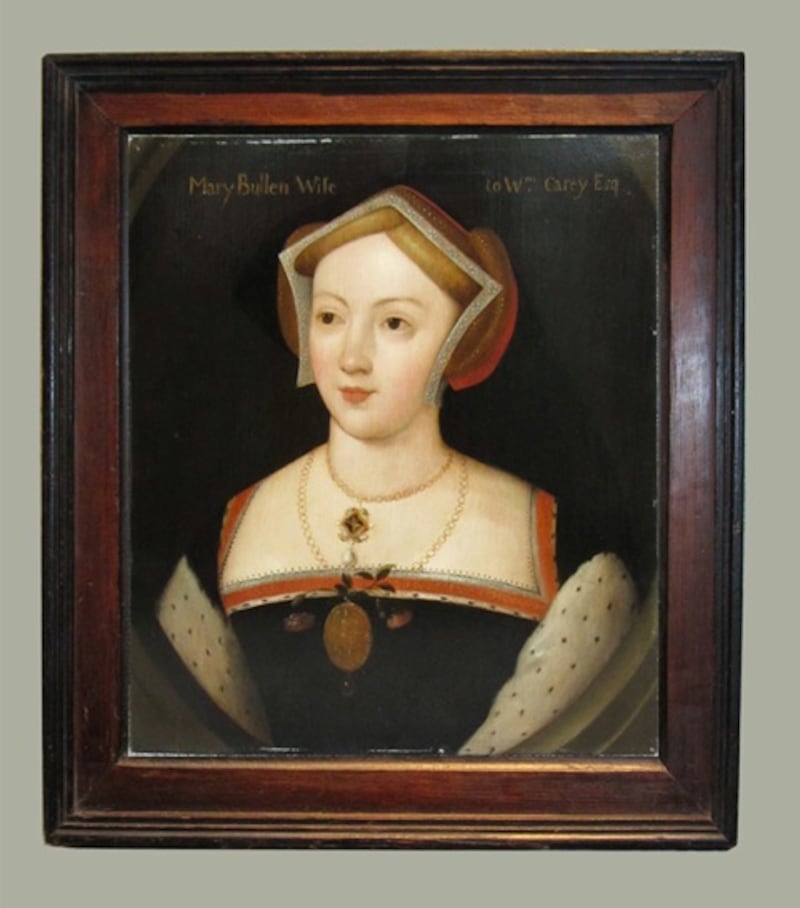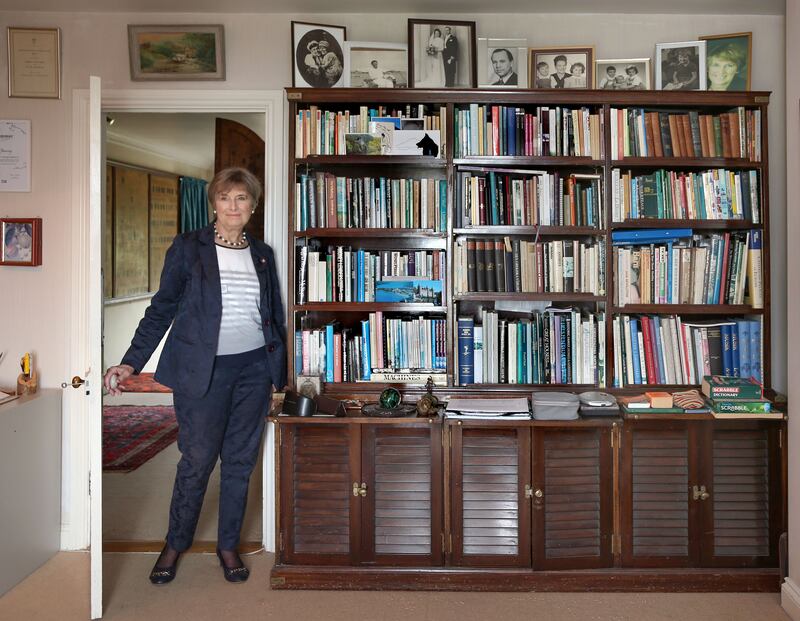Every writer would like to have a juicy family history to draw upon for their work, but few are as fortunate as Co Galway-based Ann Henning Jocelyn. Her husband Robert Jocelyn, the 10th Earl of Roden, is a descendant of Mary Boleyn, sister of Anne. Like her sister, Mary also had a relationship with King Henry VIII, but Mary survived the encounter.
Henning Jocelyn has written plays and books and translated the works of writers such as Kazuo Ishiguro, but she always knew she would tackle the Boleyn story some day. After all, the Jocelyn family tree takes up a 15ft-long wall in her Connemara home. Following 30 years of research, her historical novel The Sphere of Light: Secrets of the Boleyn Women has been published.
The Boleyn sisters have featured in the work of numerous novelists, but Henning Jocelyn says The Sphere of Light differs because it is 100 per cent historically accurate.
“The intriguing thing about this book is that I present an entirely new version of the story, the result of decades of research that has thrown up some interesting Irish connections,” she says. “And Tudor historians approve of the theories that form the basis of the novel. They are all factually substantiated at the end of the book.”Her husband also approves. “He is pleased to see the story set straight after five centuries.”
READ MORE
[ Finding sanctuary, and love, in the wilds of ConnemaraOpens in new window ]
Mary Boleyn’s reputation suffered after she was branded by King Francis I of France as “a very great whore, the most infamous of them all”. Mary and Anne had been sent to the French court in 1514 as maids of honour to Princess Mary Tudor, who was to marry King Louis XII. He died soon after the wedding and was succeeded by Francis I, who reputedly boasted about deflowering Mary Boleyn and passing her around his courtiers.
“That was possibly not true, but even if it was true, the girl was only 13 years old when she was sent to the court,” Henning Jocelyn says. “If she was ordered into Francis’s bed and then passed round his courtiers, as has been alleged, who was she to refuse? In our days, we’d call that child abuse.”

Years later, Mary Boleyn was married to William Carey, a courtier, when King Henry VIII’s eyes fell on her. They had a liaison for a few years, and it’s believed that her son Henry was the king’s son, although he was never acknowledged as such. As a toddler, Henry Carey was taken from his mother to become a ward of Anne Boleyn. After Anne was executed by the king because she failed to produce a male heir, the child was educated at Hunsdon Manor along with Anne’s daughter Princess Elizabeth, who would become Queen Elizabeth I. Several generations later, one of his descendants married the first earl of Roden
So how did Mary Boleyn’s descendant end up in Connemara? Partly thanks to Henning Jocelyn. Originally from Sweden, she was working as a linguist in the World Trade Centre in London when she met Jocelyn.
[ The little-known Connemara interlude in Ted Hughes’s lifeOpens in new window ]
She was attempting to finish her first book Modern Astrology when he mentioned he had a house in Ireland that she could use. She arrived in Cashel, Co Galway, in 1982 for five weeks, and never left Ireland. She and Jocelyn have one son, Shane.
She was always intrigued by the Boleyn story and read everything she could find about the family. Her novel focuses on George Boleyn, the Dean of Lichfield, whom she says was airbrushed out of the Boleyn story and is routinely described by historians as “some distant relation”. She says he was actually the son of Anne and Mary Boleyn’s brother George, but his birth was never registered. And she points to a gravestone in Offaly to prove this theory.
“For me, the key to this story was when I met a lecturer at NUI Galway who told me about the tombstone at Clonony Castle in Offaly, with the names of Mary and Elizabeth Boleyn [spelt Bullyn on the gravestone]. It turned out that these were the granddaughters of George Boleyn, who then became the protagonist in my story.”
Henning Jocelyn was an art historian before she became a writer, but little did she think that one day she would be a part-owner of two portraits of the Boleyn sisters. Many later copies of these portraits exist, but she believes these portraits are among the earliest.

The art collection passed through the various earls of Roden. Jocelyn’s father, the ninth earl, was attacked in his home in Bryansford, Co Down by a gang of masked robbers in February 1990. The painting of Mary Boleyn was stolen, and the earl had a stroke during the robbery that eventually led to his death. Most of the items were later recovered, but the portrait of Mary remained lost. Then, some 20 years later, the international Art Loss Register discovered it for sale in Paris. The auction house withdrew it when it was alerted.
The portrait had been bestowed upon Henning Jocelyn and Jocelyn’s son in his grandfather’s will. He was a student in London at that time and they dispatched him to Paris with a wad of banknotes to buy back the portrait. He got his inheritance back and carried Mary Boleyn around Paris in a black refuse bag until it was time for the Eurostar to return to London.
When he was getting the Nobel Prize, I was invited to the ceremony in Stockholm. It was very nice to meet him again and he talked so much about Ireland because he used to come to the Clifden Arts Festival
— Ann Henning Jocelyn on Kazuo Ishiguro
The wooden panels of both portraits were dated after they were reunited and found to have originated between 1606 and the mid-1600s. The portraits are now in a secure location and digital copies hang in their Cashel home.
Henning Jocelyn says the idyllic scenery of Connemara has provided much inspiration for her work, and indeed her output is prolific. When she became a literary translator, her first job was to launch Ruth Rendell in Swedish. She would go on to translate some 50 books, including the first two books by Kazuo Ishiguro, the Nobel and Booker winner.
“That was a great pleasure, partly because he’s such a nice character but also because his language is so crystal clear. When he was getting the Nobel Prize, I was invited to the ceremony in Stockholm. It was very nice to meet him again and he talked so much about Ireland because he used to come to the Clifden Arts Festival, and he wanted news of everyone. He talked very warmly about his time here.”
She has also translated more than 30 plays from Swedish to English. They include works by Henning Mankell, author of the Kurt Wallander crime series. “Henning Mankell was married to Ingmar Bergman’s daughter Eva, who is a very old friend of mine from our hometown of Gothenburg.”
She was recently commissioned to write the screenplay based on Mankell’s play Afternoon Encounter. The story is about a couple who separated 25 years earlier and meet again when the woman seeks a divorce, but her husband refuses. An Oscar-winning actress has been attached to the project, Henning Jocelyn says, but she can’t yet reveal who that is
She is involved in a second film project with an Irish producer, based on her play Doonreagan. It centres on the time Ted Hughes lived in Ireland, in the house she now lives in. That play opened in London in 2013 before touring the UK and Ireland.

For now, it’s all about the Boleyn sisters and the dispelling of a few of the myths about the women. “A lot of accounts about the Boleyn women have been written by men and they all had their own hidden agendas. Of course, they presented what they wanted people to believe,” she says. “I believe this changes the story.”
The Sphere of Light: Secrets of the Boleyn Women is published by Doonreaghan Press. A play based on the book will premiere at the Hever Castle Theatre Festival, Kent, in August.















